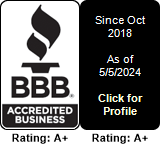Clover…
When we adopted a dog, we naively thought that getting a puppy would allow us to mold her into the dog we wanted, if we just did training and socialization from the start. We had the best of intentions and tried to do everything right from day one. Turns out, the puppy we adopted had a very sensitive and shy temperament that she did not outgrow naturally, as everyone told us she would. Our dog was fearful and reactive toward anything unfamiliar (other pets, people, and even inanimate objects that were a surprise). After a year of working with two different highly recommended trainers, neither of which helped us work through what was showing up (with one trainer making it way worse before we cut ties), we searched out a trainer with a focus on fear and anxiety in dogs and found Paula.
Paula’s approach is different than the traditional obedience model and that took some adjusting to. It’s a process that requires immense patience by all parties (Paula, the pet parent, and the dog) as you learn to implement two-way communication with your dog, much of which is non-verbal and very subtle. It’s hard and frustrating at first and might feel slow, in part because you go at the pace of the dog and also because, at least in our case, we had a lot of rehab to do from the prior training methods we had used that created stress. If you are used to a black and white “if this, do that” training model and the immediacy of obedience training, this is an adjustment. But seeing the harm caused by that model with our own dog has helped me understand the value of trying another path.
It really helped me when I realized Paula was teaching us the same methods used by professional trainers who specialize in animal behavior (e.g. the training they do w animals at the zoo to get them used to voluntarily receiving care). Our buy-in to the process jumped up and things began to click. Paula is super open to feedback and just wants to ensure everyone is learning in an optimal way. I have appreciated Paula’s patience, even when we were super frustrated early on, and her passion to support both the dog and the family. She considers the practical needs of the humans alongside what is best for the dog and works to establish good foundational care for everyone.
We are in a place now where we are seeing real changes in our dog and increasing our trust in each other. I can now see cues from my dog that I completely missed in the past and have a better idea of how to respond to help my shy pup calm herself down in moments of stress. We aren’t all the way there yet but we have faith that we will get there with consistency and practice.
I feel grateful we discovered this training method and will use it with future dogs (even if they are not shy and fearful).






